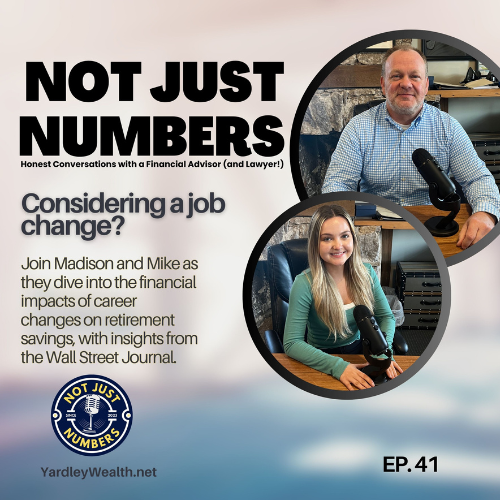Episode 41: Job Switching and Your 401(k): How to Stay on Track with Retirement Savings
Hosts: Madison Demora and Mike Garry
In this episode of Not Just Numbers: Honest Conversations with a Financial Advisor and Lawyer, Madison Demora and Mike Garry dive into a critical topic for job switchers: how transitions in employment can impact retirement savings. Inspired by a Wall Street Journal article by Anne Tergesen titled “When Changing Their Jobs, Workers Neglect 401(k) Plans”, the hosts explore the challenges and solutions related to maintaining steady 401(k) contributions during job changes.
Listen to Our Podcast On:
TIMESTAMPS
00:08 – 02:39 Introduction to episode topic: When Changing Their Jobs, Workers Neglect 401(k) Plans
02:40 – 04:39 – How Switching Jobs Affects 401(k) Plans & Reasons for Job Switchers Failing to Sign Up for New 401(k) Plans
04:40 – 06:10 – Strategies to Avoid Losing Retirement Savings During Job Transitions
6:11 – 09:02 – Explaining the “Saw-Toothed” Pattern in 401(k) Savings
09:03 – 12:04 – Impact of Automatic Enrollment & Life Changes and Their Impact on 401(k) Contributions
12:05 – 15:27 – Common 401(k) Rollover Mistakes & Advisors’ Role in Job Transitions for Retirement Savings
15:28 – 18:15 – Balancing New Job Demands and Retirement Goals & Closing Remarks
Follow Us on Social Media
Stay updated with the latest episodes and news by following us on social media:



